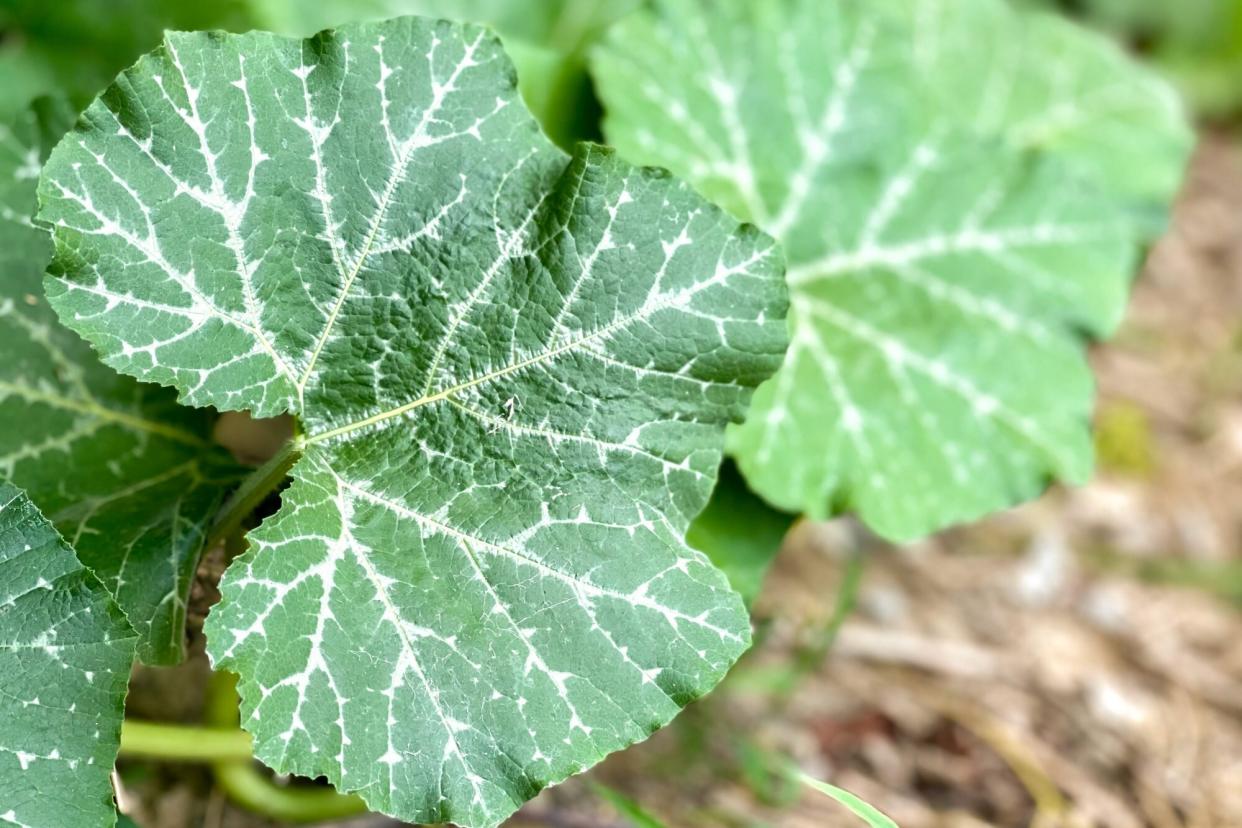Yes, You Can Eat Pumpkin Leaves—Learn About Their Health Benefits and How to Use Them in Your Cooking

GETTY IMAGES
TABLE OF CONTENTS
On This Page
Health Benefits
How to Harvest
How to Prep
How to Cook
Known for its bright orange color and sweet earthy flavor, pumpkin is one of the most beloved fall-time ingredients in the United States. In fact, every autumn, many of us start collecting pumpkin recipes in celebration of the season. But what about their leaves?
As it turns out, pumpkin leaves, sometimes called pumpkin greens, are edible, nutritious, and delicious. Moreover, using them in your cooking will help you get the most out of your pumpkin plants. We asked a nutritionist and a cooking teacher to speak to their health benefits and learn how to use them in our go-to autumn recipes.
Related: Kale Recipes That Will Make You Fall in Love with This Leafy Green
The Health Benefits of Pumpkin Leaves
Pumpkin greens, like many other leafy vegetables, are teeming with nutritional benefits.
Antioxidants
For starters, they're rich in antioxidants like beta-carotene (which is also found in pumpkin itself), flavonoids, and vitamin C, according to registered dietitian Maddie Pasquariello, MS, RDN. Antioxidants help your body by fighting free radicals, or harmful molecules that—when present at high levels—can cause cellular damage and increase the risk of chronic disease like cancer, diabetes, and hypertension, notes Pasquariello.
Essential Minerals and Vitamins
Pumpkin leaves are also rich in essential minerals, including potassium, which is required for muscle contractions, fluid balance, and chemical signaling between neurons (nerve cells). "It also helps ensure the kidneys, digestive system, and heart are functioning properly," adds Pasquariello. Other minerals in pumpkin greens include calcium and magnesium, which are involved in bone health and muscle function, respectively.
What's more, pumpkin leaves contain a small, but noteworthy amount of folic acid, or vitamin B9. As Pasquariello explains, folic acid is found in pumpkin leaves and flowers (which are also edible), as well as the pumpkin meat itself. "It's important for the growth and development of cells and tissues throughout life, and [it's] especially vital for proper brain function," says Pasquariello.
How to Harvest Pumpkin Leaves
Since pumpkin leaves aren't typically sold in supermarkets, you'll have to harvest them from your own garden—or, if you're lucky, buy pumpkin leaves at your local farmers' market. When picking them from the garden, it's best to choose younger leaves, which are tender and better suited for cooking, says Ann Ziata, chef and cooking teacher at the Institute of Culinary Education.
To harvest a leaf, fold the stem in half so that it snaps, but the fibers are still intact. Next, pull the half of the stem attached to the fibers, which will separate them from the leaf. This will allow you to destring the leaves as you pick them, explains Ziata. Also, "cut about every other leaf so the plant can continue to grow," she says.
How to Prep and Store Pumpkin Leaves
Before serving pumpkin leaves, wash them like lettuce. And while freshly picked iterations are best for quality and flavor, you can certainly save some for later, says Ziata.
To store fresh leaves, wrap them in a paper towel and place them in an airtight container in the refrigerator. "For longer storage, pop them in the freezer," she suggests. Or if you own a dehydrator, slice clean pumpkin leaves and dehydrate them until crispy, then store them in an airtight container at room temperature for up to one year.
How to Cook with Pumpkin Leaves
According to Ziata, pumpkin leaves have a delicious vegetal "green" flavor, much like spinach, string beans, and broccoli florets. They're also less bitter than kale and Swiss chard.
Best of all, you can enjoy pumpkin leaves as you would most other leafy greens. For example, in West Africa and India, pumpkin leaves are often used in dishes like soups, stews, and curries. "They would also be fantastic even just sautéed with a little olive oil, garlic, tomatoes, and spices," says Ziata.

